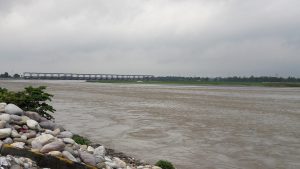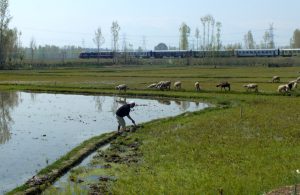Hurricane Irma’s near total destruction of Barbuda – one of two Caribbean islands comprising the state of Antigua and Barbuda – has not deterred Chinese investors from pressing ahead with construction projects on the larger island of Antigua, which residents say have already weakened its resilience to natural disasters.
Antigua escaped largely unscathed following the most powerful Atlantic storm in over a decade, which ripped through Caribbean islands at speeds of over 185 miles per hour in September last year, leaving 134 dead and around 95% of homes on Barbuda destroyed.
Despite the importance of mangrove ecosystems in protecting the islands from natural disasters, Yida International Group has been allowed to move ahead with a controversial special economic zone encompassing parts of the Crabb’s Peninsula and Guiana Island, which is part of the North East Marine Management Area (NEMMA).
This notionally protected stretch of coastline is home to fragile mangrove ecosystems. Under Antigua’s 2006 Fisheries Act, the Fisheries Division can only grant permission to “prune” a mangrove when this is of benefit to the environment.
Yet images from the ground clearly show that new beaches created as part of Yida’s resort have resulted in the removal of mangroves. Prime Minister Gaston Browne, said the government will override environmental laws to expedite the development, with the initial construction of two hotels, the Antigua Observer reported.
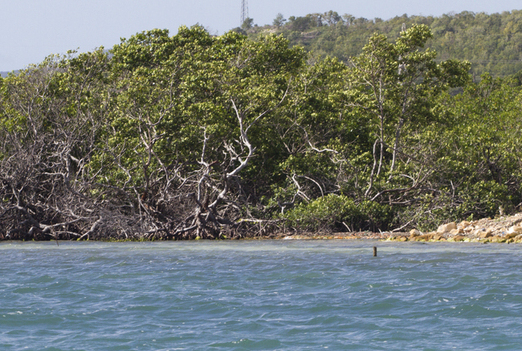
“This is an environmentally sensitive area, protected by various legislation and characterised by large areas of coral reef, seagrass beds, sandy shoals, untouched islets and an extremely productive marine habitat,” said Foster Derrick, an environmental activist who set up the Save the Guiana Island Environment Facebook page.
Derrick added that it is extremely difficult for the governments of small island states to opt for the minimal jobs created by maintaining naturally productive environments over the various construction and management jobs in tourism-related operations.
The Antigua and Barbuda Department of the Environment (DoE) said that comprehensive coastal environmental impact and engineering studies were needed. Yet it has stopped short of calling for Yida to produce a new environmental impact assessment (EIA) to replace the existing one, which highlights major problems.
“The creation of beaches is neither sustainable nor practical and will prove to be very costly,” it said in its review of the EIA.
Vital mangroves
Mangroves are critical in protecting coral reef fish nurseries and providing a home for migratory birds, according to Fiona Wilmot, a biologist and Caribbean expert at the Mangrove Action Project. Before Irma, they covered around 2,161 acres of land, or 3%, in Antigua and 14,468 acres of Barbuda, equivalent to 35%, according to most recent available data (2010).
They were once part of a thriving intertidal ecology.
Mangroves defend against flooding during tidal changes by sinking roots into sandy coastlines. They also establish a natural barrier that blocks harsh winds during hurricane season. Removing mangroves threatens human safety because land is more vulnerable to erosion, leaving nearby populations less protected from storms.

According to a report by the University of Cambridge and conservation group The Nature Conservancy, mangroves can reduce the wave height of tsunamis by 5-30%, and play an important role in mitigating climate change by capturing carbon dioxide and defending against rising sea levels.
Wilmot recommends that mangroves in Antigua and Barbuda, which may have been uprooted by Irma, be restored by hand and that the government earmark disaster relief funds for preserving natural species.
Rebuilding
In the wake of Irma’s devastation, the Chinese government provided Antigua and Barbuda with a US$16 million aid package. The aid followed the signing of an economic and technological cooperation agreement between the two countries. However, it is unclear where the majority of funds will be spent. Only about US$1.2 million will go towards disaster relief and the construction of new community centres.
Arica Hill, from the Antigua and Barbuda DoE, informed Diálogo Chino via email: “There are several areas that are being prioritised in response to the imperative of heightened natural disasters.”
These include better assessing the impacts on conservation hotspots such as Barbuda’s Codrington Lagoon national park, breeched in three areas by Irma, and building resilience against the impacts of tropical storms and droughts, Hill added.
Yet with almost all homes and public buildings in Barbuda destroyed by Irma, there are fears the government will use the need for rebuilding as an excuse to sell land to foreign investors that want to construct tourist resorts and override environmental laws as it has on Antigua.
“The Yida project enhances the already negative precedent of ignoring the Environment department’s advice and this appears to be being followed in the rebuilding of Barbuda,” said Derrick.
Nor has it been clarified to what extent efforts to rebuild Barbuda will include planting or re-planting mangrove forests that can protect it from extreme weather events and coastal flooding.
Among others, China, Canada, Japan, Venezuela, India and the EU have contributed funds towards re-building Barbuda, Prime Minister Browne said on announcing the treasury’s 2018 budget in January.
The Chinese government disbursed a further US$2 million grant through the UNDP-China Aid Post Disaster Restoration Initiative administered to replace roofs on hurricane-affected buildings in Barbuda.
Wang Xianmin, China’s ambassador to Antigua & Barbuda said of the roofing programme: “The Government of China is delighted to support rebuilding this paradise”.
But with Browne estimating the cost of re-building Barbuda at US$600 million – equivalent to 95% of tax revenue collected by the government last year – aid donations on their own will likely leave a significant shortfall.
Browne said climate resilience would be a main consideration in new construction projects:
“We are on our way to rebuild Barbuda in a way that will make each of its residents more secure, more resilient, and more endowed, to overcome any future challenges that climate change might bring.”
However, since the storm and despite his efforts, Browne’s government has come under fire for its inadequate response to the crisis.
A recent report by Ground Truth Solutions, an organisation that works in the humanitarian sector, revealed 29% of Barbudans, the largest percentage of those surveyed, felt their needs were “not at all” being met. Similarly, over a third of respondents, again the largest fraction, said aid was not going to those who needed it most.
Tourism drive
The Antigua and Barbuda government is touting both islands as promising sites for foreign investment in the tourism sector, which it regards as the islands’ best bet for economic development.
Browne listed first among his government’s budget priorities “Building a strong tourism industry to anchor our economy”. He said the island stood to benefit from “significant investment” in tourism.
The prime minister also invited China Civil Engineering and Construction Company (CCECC) to participate in the development of tourism infrastructure in Barbuda in a recent meeting with Chinese diplomats, according to local news reports.
The Antigua and Barbuda government has already awarded a US$90 million contract to CCECC to construct a cargo port and cruise ship harbour in the capital St. John’s. The state-owned Export Import Bank of China (China EXIM Bank) is financing the development.
However, Derrick warned against the government “biting off more than it can chew” in promising large tourism-related contracts:
“Projects that are as large as the Yida project and the Dato Tan project of earlier years in the same area, are far too large for countries such as Antigua and Barbuda to properly and effectively manage in all areas from construction to constant monitoring and mitigating of everyday activities.”
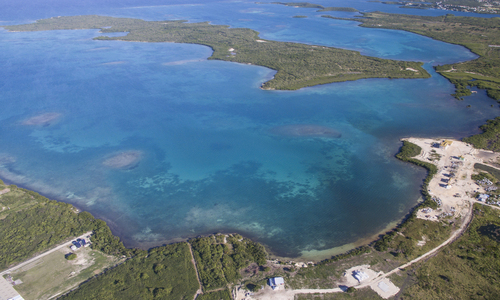
Hill said Antigua and Barbuda’s 2003 Physical Planning Act allows any concerned party to appeal decisions made on development projects.
A Yida employee contacted by Diálogo Chino who did not wish to be identified, describing himself only as a “worker”, declined to give a comment but played down the environmental impacts of the project and suggested it complied with government regulations.
New Chinese rules
With limited international support for the rebuilding effort, the Antigua and Barbuda government has welcomed Chinese investment in the tourism sector and wider economy.
While the government is ultimately responsible for ensuring the islands’ environmental laws are upheld, China is also taking steps to address criticisms that its companies are investing irresponsibly.
In August, the State Council – China’s chief administrative authority – set out new guidelines on responsible overseas investment, identifying hotels and real estate as an area in which activity should be “restricted”.
In a separate announcement, China’s top economic planning agency the National Development and Reform Commission strongly discouraged investments it deemed “irrational”.
On releasing the new guidelines, the State Council also promoted projects under the framework of the Belt and Road initiative (BRI), a project that Latin American and Caribbean states were invited to participate in at the recent CELAC-China ministerial meeting in Santiago, Chile.
However, in the Caribbean, disputes between investors and contractors have derailed flagship projects such as the Bahamas’ mammoth US$3.5 billion Baha Mar tourist resort. A deep-water port on Jamaica’s Goat Island backed by China Harbour Engineering Group was shelved over fears about its impacts on marine life.
This has further added to regional concerns over the environmental impacts of Chinese investments and the effect of coastal developments on climate resilience.
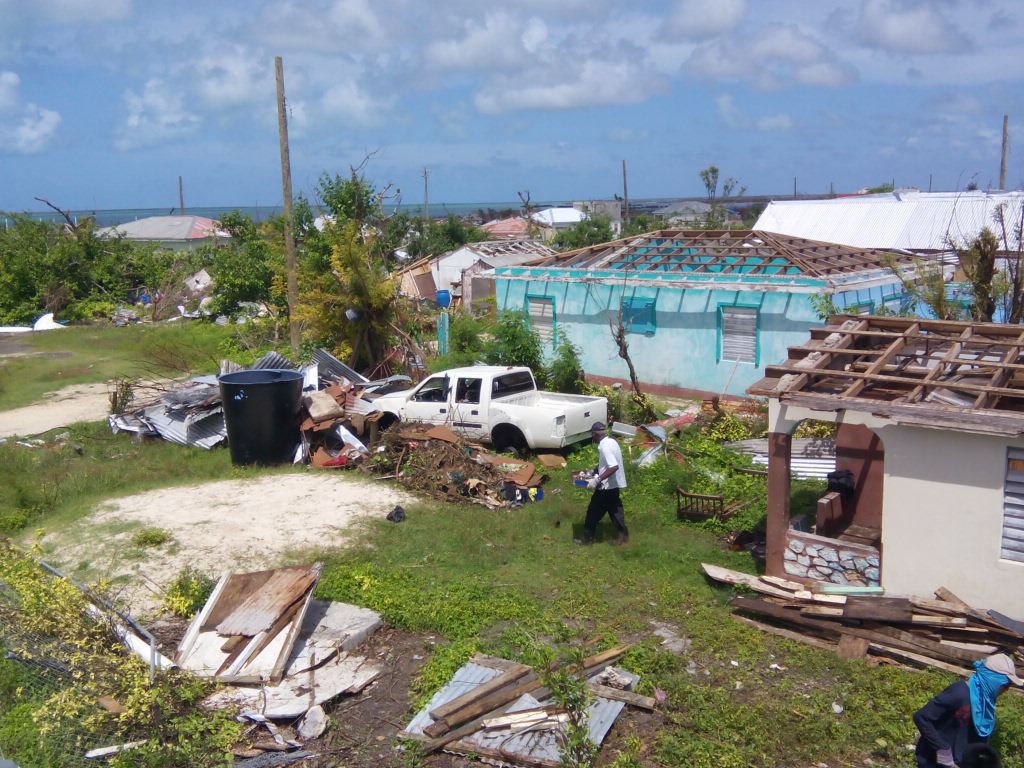



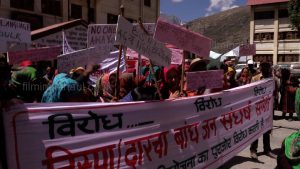

![Two fishermen on the Brahmaputra, a river that winds through four countries [image by: Sumit Vij]](https://dialogue.earth/content/uploads/2018/04/Brahmaputra-300x200.jpg)
